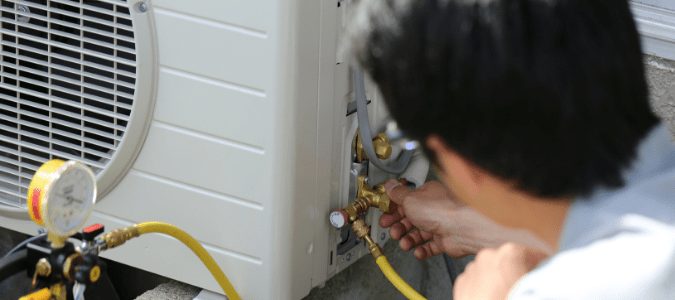The coming of the colder months means digging out your scarves, gloves and jackets from the depths of your closet so you can stay toasty. It also means preparing your home for the cold weather and ensuring it doesn’t take any damage. That includes checking on your home’s HVAC system. If the furnace is not kicking on when temperatures drops, it can lead to a number of issues. Not to mention, you’ll be uncomfortably cold.
If you want to make your home as warm and cozy as possible, here are some ways to troubleshoot a furnace that won’t turn on. If all else fails, contact an HVAC specialist. An HVAC specialist will have your furnace running smoothly again so you can enjoy the cold months to the fullest.
Furnace Not Kicking on When the Temperature Drops? Here’s What To Do
Several factors can prevent a furnace from turning on despite a temperature drop. Some of them involve straightforward solutions, while others require technical know-how. Here are the ways to troubleshoot the issue:
Turn on the Thermostat
This solution may seem too easy, but many homeowners forget to check if the thermostat is on. It’s a crucial part of the HVAC system, responsible for sensing the room’s temperature and adjusting the furnace’s settings according to your preferences. You can usually find it attached to one of the walls in your house above a light switch. If the thermostat is off, the furnace won’t know when it should kick on, explaining your situation.
If you have a programmable model, the display should be on, and the unit must be in the “heat” setting. But if it’s manual, the switch must be in the “on” position. It’s easy to bump it to “off” on accident or while cleaning. Once you’ve turned on the thermostat, select a temperature that will trigger the furnace to run. If there’s still no heat after a few minutes, keep increasing the temperature.
Turn on the Gas
If you have a gas furnace, check if the valve is open. You or someone else in your home might have accidentally closed it, preventing the furnace from turning on. The gas valve will always be within six feet of the unit. Gas valves have different designs but usually come with a small handle or lever. If the handle is parallel to the pipe, the valve is open. But if it’s perpendicular, the valve is closed. However, the configuration varies with each furnace, so study how yours works.
If you’re sure the valve is open, but the furnace still doesn’t kick on, check if your other gas appliances are working. If the fireplace or stove is also not turning on, there might not be any gas coming into your home.
Replace the Air Filter
Air filters trap dust and other debris in your home, and eventually, they can become clogged. When that happens, the furnace can’t do its job well. The airflow will become restricted, making the unit less efficient. It can also cause the temperature in the heat exchanger to keep rising. Furnaces have switch limits that trip when the temperature gets too hot, causing your unit to shut down for safety. You can prevent these issues by replacing the air filter every three months.
Slide the old air filter out and take note of its size and model number. You can also bring it to the hardware store with you so you can purchase the right one. When installing the new air filter, follow the arrow on its frame to ensure it’s facing the correct direction.
Clean the Flame Sensor
Some homeowners feel comfortable cleaning their furnace’s flame or ignition sensor. It is a safety device that can sense if the unit is burning gas. It uses the temperature increase to determine if there are flames inside. If it can’t detect a fire, it will automatically turn off the furnace. However, the flame sensor can’t function if there’s residue buildup.
You can solve this problem by cleaning the flame sensor, but it does involve several tools and steps. You must remove the screw beside the sensor, slide out the dirty device and rub the metal rod with steel wool. Once clean, return the sensor to its original position and secure it with the screw. Ultimately, it’s better to have a professional, who knows how furnaces work, do this task.
If none of these troubleshooting tips get your furnace to kick on, it’s time to seek the help of a professional. An HVAC specialist will assess the situation, identify the cause of the problem and provide the best solution.
How a Furnace Flame Sensor Works
The flame sensor is an essential part of furnaces, ensuring the safety of users. It only opens the gas valve if it detects flames inside the furnace. If there are none, it will immediately shut off the unit. It prevents unburned gases from building up, leaking and causing a fire. Flame sensors can start malfunctioning over time. Here are some signs that your flame sensor isn’t working correctly.
Rusty Flue Lines
The flue system works by moving harmful carbon monoxide gases away from your home. But, if the flame sensor isn’t working and there’s a gas leak, that will cause the flue lines to corrode and become rusty.
Yellow Burner Flames
Look through your furnace’s peephole and check the color of the flames. Everything is working as it should if they are blue. But if they are yellow, that’s a sign of a malfunctioning flame sensor.
Water Leaks
If you see water pooling at the base of your furnace, find the source of the leak as soon as possible. If it only happens when the AC is on, it’s likely a water condensate line issue. But if puddles show up while the heat is on, you might have a faulty flame sensor.
Expensive Utility Bills
If your consumption level has been the same, but you keep wondering why your electricity bill is so high, your furnace might be to blame. First, check if the air filters are dirty, as that can affect the furnace’s efficiency. But if they’re clean, there might be a more severe underlying issue with the flame sensor that’s keeping the unit from working at its optimum level.
Old Unit
If your furnace is over 20 years old, don’t be surprised if its parts break down. That includes the flame sensor. It’s probably time to purchase a newer model that runs safely and efficiently.
If your furnace shows signs of a malfunctioning flame sensor, don’t ignore it. A faulty flame sensor can lead to disastrous consequences if left unaddressed. Contact an HVAC professional if you suspect you have a broken flame sensor. An HVAC specialist has the tools and expertise to perform the necessary repairs or replacements.
What To Know About a Furnace Fuse
Not all homeowners know that most modern furnaces have their own fuse, which includes gas furnaces. This safety device is there to protect the furnace system from damage in case there’s an overload. If you plug too many appliances into your transformer, the furnace fuse will trip to keep the unit safe. It also prevents electrical fires from breaking out in your home. The breaker might not detect all overloads, so the furnace fuse keeps things in check.
While it’s normal for furnace fuses to trip occasionally, there’s something wrong if it’s blowing repeatedly. Here are some possible causes for that issue:
- Extreme strain. If your furnace is too small for your space, it won’t have enough power and will strain itself. That will cause the fuse to blow because the unit can’t take the demand.
- Dirty or clogged air filter. If airflow is restricted, the furnace can’t function as it should. That will cause unnecessary strain on the unit and blow the fuse.
- Wiring issues. If the wiring within the furnace system is loose or damaged, the fuse might keep tripping. If you’re attempting to fix wiring issues, cut the power off to prevent electrical injuries.
- Worn-down parts. Furnace parts will wear down over time and start malfunctioning. As the unit breaks down, you’ll have a blown fuse more often.
Let a Professional Handle Your Furnace Woes
If your furnace is not kicking on when temperatures drops, it can be uncomfortable. But an HVAC specialist can turn that all around. It may be hard for homeowners to pinpoint the exact problem with their furnace. But a professional can identify it and bring the warmth back to your home.
ABC Can Solve Your Heating And Cooling Woes
Furnaces are complex systems, and trying to work on them without special training and tools can create larger problems and can even lead to damage to your home. Instead of taking these risks, contact the professionals at ABC Home & Commercial Services. Our licensed specialists are available all day and all night to handle any HVAC repairs or issue you may be having, such as hearing your furnace making noises.



